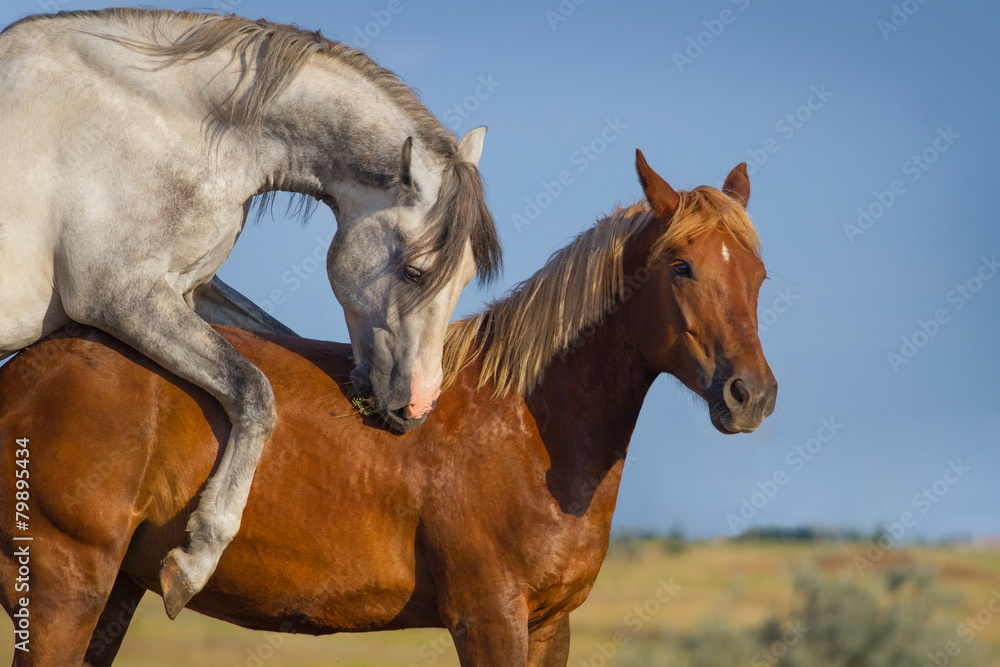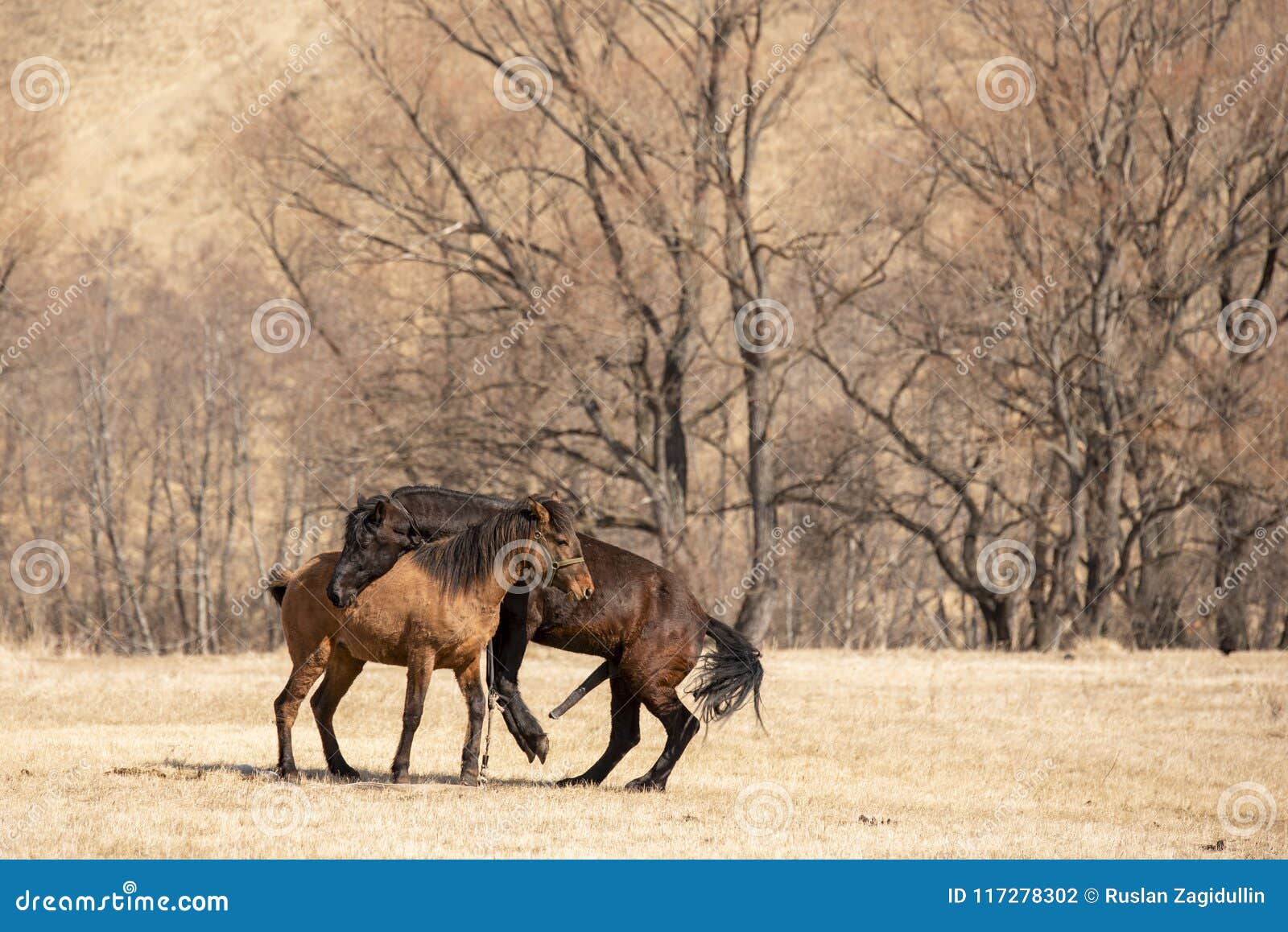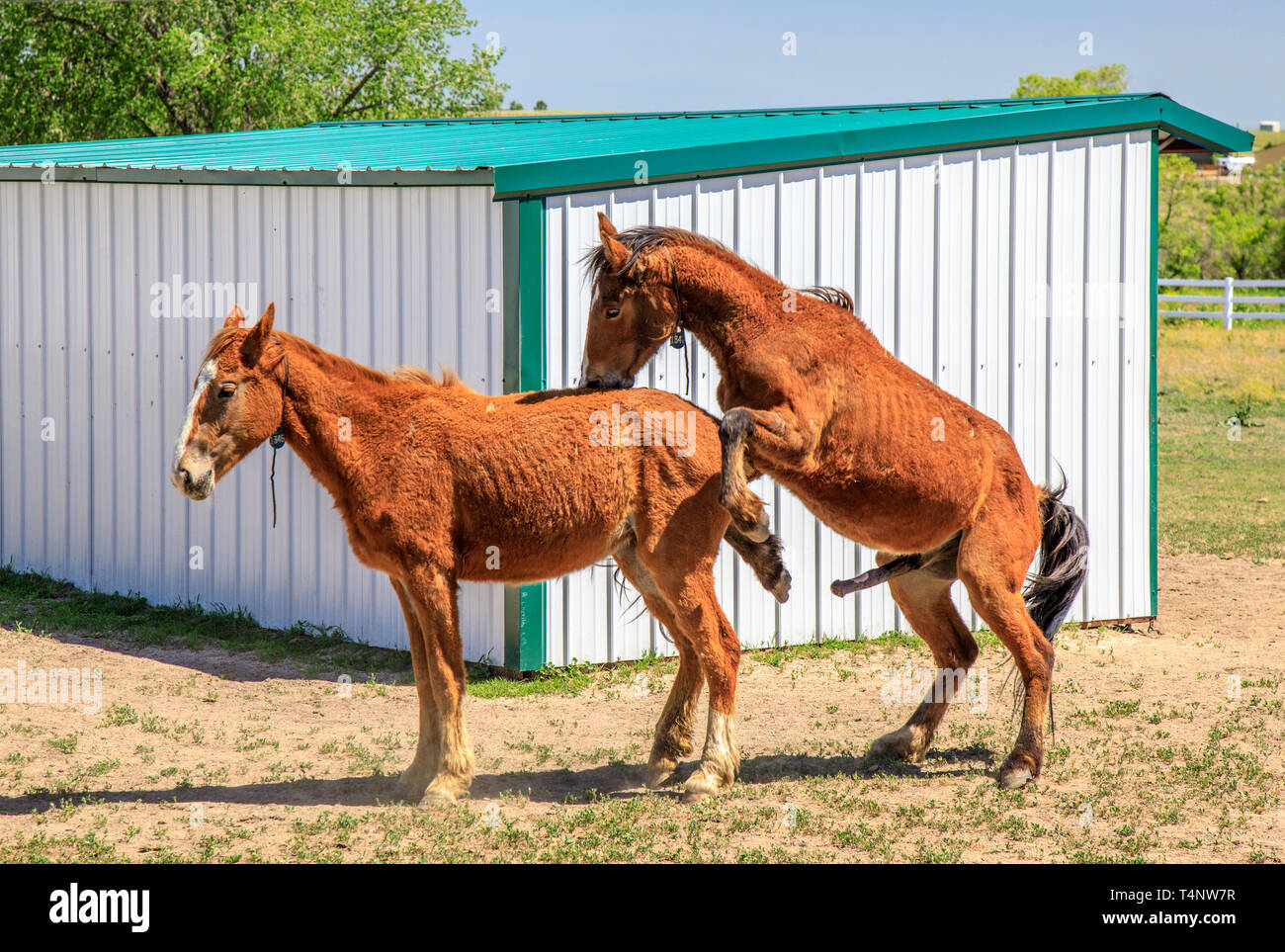The Fascinating World Of Horse Mating: A Comprehensive Guide
Learning how do horses mate is a captivating aspect of equine biology and behavior, revealing a complex interplay of instinct, timing, and communication. For anyone involved with horses, from seasoned breeders to curious enthusiasts, understanding the intricacies involved in reproduction is important. This natural process, often referred to as horse breeding, is fundamental to creating the next generation of these magnificent animals.
This article will explore the fascinating world of horse reproduction, answering the question of how horses mate and discussing the different stages of the mating process. We'll delve into the biological and behavioral aspects, from the estrus cycle to the courtship ritual, and discover how to optimize breeding success while promoting horse welfare. Join us as we uncover the secrets behind equine reproduction, ensuring you gain valuable insights into this vital aspect of horse care and management.
Table of Contents
- Understanding the Basics of Equine Reproduction
- The Courtship Ritual: A Dance of Instincts and Signals
- The Four Stages of Horse Mating: From Courtship to Copulation
- Factors Influencing Breeding Success in Horse Mating
- Human Management and Assisted Breeding Techniques
- Caring for Breeding Horses: Before and After Mating
- The Journey Continues: Gestation and Foaling
- Conclusion
Understanding the Basics of Equine Reproduction
Like most mammals, horses reproduce sexually. The male horse (stallion) and the female horse (mare) come together for breeding. Understanding the basic reproductive anatomy of stallions and mares is crucial for anyone involved in horse breeding. Stallions possess testes that produce sperm and testosterone, while mares have ovaries that produce eggs and reproductive hormones like estrogen and progesterone. The intricate dance of hormones and instincts guides the entire process of horse mating, ensuring the continuation of the species. Geldings, which are castrated male horses, do not possess the ability to reproduce, though they may still exhibit some natural male behaviors.
The Mare's Estrus Cycle: The Foundation of Breeding
The mare goes through an oestrous cycle, often referred to as being "in heat," where she becomes receptive to mating. This cycle is similar to a menstrual cycle in humans, though with distinct differences in duration and behavioral cues. This cycle typically lasts around 21-22 days, with the mare being receptive to the stallion for a portion of that time. During this period, the mare's body is unusually receptive to the stallion's advances, a critical window for successful conception. The mare will usually be in heat for about five days, though this can vary individually. If conception does not occur, the mare will usually go back into heat between seven to fourteen days after the first mating, depending on various factors including season and individual physiology.
The Stallion's Role: Readiness and Drive
Stallions, unlike mares, do not have a cyclical period of "heat." They are generally capable of breeding year-round, provided they are healthy and in good condition. Their reproductive drive is primarily influenced by the presence of receptive mares and their own inherent instincts. With their large and powerful bodies, stallions often exhibit a commanding presence, sometimes playfully referred to as "king in mating" due to their dominant role in the breeding process. A healthy stallion will display strong libido and clear signs of interest when a mare is in estrus, which is essential for successful natural cover. Proper management of the stallion is key, including regular exercise, a balanced diet, and routine veterinary checks to ensure his fertility and overall well-being.
The Courtship Ritual: A Dance of Instincts and Signals
The process of horse mating begins long before the physical act, with a natural courtship process involving instincts, timing, and playful horseplay. This elaborate ritual allows the stallion and mare to assess each other, establish a connection, and confirm the mare's receptivity. Understanding these courtship rituals and signals is vital for breeders looking to optimize success and ensure the welfare of their animals. When a receptive mare is detected, the stallion’s behaviors become more focused and intentional. He may approach the mare cautiously, often exhibiting a flehmen response – curling his upper lip to better detect pheromones. He may gently nuzzle and nip at the mare’s neck and flanks while emitting rhythmic snorting or soft nickering sounds. These actions aim to establish a connection and assess the mare's willingness to breed. The mare, in turn, will show signs of receptivity such as raising her tail, squatting, urinating frequently, and "winking" her vulva. If she is not receptive, she may pin her ears, kick, or try to bite the stallion, clearly indicating her unwillingness to mate. This communication is critical for a safe and successful mating.
- John Cena Death
- Bill Ackman Daughter
- Rolling Stones Band Members
- Jasmine 90day Fiance Latest
- Was Jj Watts Mom An Athlete
The Four Stages of Horse Mating: From Courtship to Copulation
The fascinating process of horse mating, whether in the wild or under human management, typically unfolds in four distinct stages: courtship, mounting, copulation, and post-copulation. Discovering the stages, behaviors, and cues involved in each phase provides a comprehensive understanding of equine reproduction. Each stage plays a crucial role in ensuring successful fertilization and the safety of both animals. Breeders and owners need to be aware of these stages to manage the breeding process effectively and identify any potential issues.
Stage 1: Courtship and Pre-Mating Behavior
As discussed, this initial phase is all about communication and assessment. The stallion engages in a series of behaviors designed to test the mare's receptivity and stimulate her. This includes nuzzling, nipping, sniffing, and vocalizations like nickering and snorting. The mare, if receptive, will respond with specific body language, such as tail flagging, squatting, and vulvar winking. This stage can last from a few minutes to several hours, depending on the individual horses and their previous experiences. It's a delicate dance that builds anticipation and ensures both partners are ready for the next step.
Stage 2: Mounting and Preparation
Once the mare indicates full receptivity, the stallion will attempt to mount her. This involves him approaching from behind and attempting to place his forelegs over her back, positioning himself for copulation. During this time, the mare’s body is unusually receptive to the stallion’s advances, often standing still and allowing the mounting. The stallion's penis will become erect and he will seek entry into the mare's vagina. This stage requires coordination and balance from both animals. In managed breeding settings, handlers often assist by guiding the mare and ensuring the stallion's safety and proper positioning, especially if either horse is inexperienced.
Stage 3: Copulation: The Act Itself
Copulation, or the actual act of mating, occurs when the stallion successfully penetrates the mare. During this phase, the stallion will typically make several pelvic thrusts, culminating in ejaculation. Ejaculation in horses is a rapid process, often completed within a few seconds, usually marked by a "flagging" of the stallion's tail. The nature of horse mating is quick and efficient. The entire copulation process, from penetration to dismount, is remarkably swift. The goal is to deposit semen into the mare's reproductive tract, allowing the sperm to travel to the oviducts and fertilize the egg. This brief but powerful interaction is the culmination of the courtship and mounting stages.
Stage 4: Post-Copulation and Disengagement
Immediately after ejaculation, the stallion will dismount from the mare. There is usually a clear separation when two horses get together for mating, especially in a managed environment. In a natural setting, the mare might graze nearby, and the stallion might continue to show interest but typically without immediate re-mounting. The majority of horse couples will stay together for only a few days in a natural herd setting during the breeding season, allowing for multiple covers if needed. After successful breeding, the mare's body begins the process of gestation. If conception doesn't occur, the mare will typically go back into heat within a predictable timeframe, usually between seven to fourteen days after the first mating, making her receptive again for another attempt.
Factors Influencing Breeding Success in Horse Mating
Optimizing breeding success in horse mating involves understanding and managing numerous factors beyond just the act of copulation. These factors can significantly impact the likelihood of conception and the health of the resulting foal. Explore the basics of horse mating, including the crucial role of hormones, behavioral signals, physical aspects, and environmental factors affecting mating. For instance, the mare's nutritional status directly impacts her fertility and ability to carry a pregnancy to term. Similarly, the stallion's health, semen quality, and libido are paramount. Environmental stressors, such as extreme weather, changes in routine, or social dynamics within a herd, can negatively affect a mare's estrus cycle and a stallion's performance. Furthermore, the timing of breeding relative to ovulation is critical; artificial insemination techniques often involve precise timing based on veterinary monitoring of the mare's follicular development. Learning about the management techniques for successful breeding, including proper nutrition, health care, and stress reduction, is essential for anyone aiming to achieve a high conception rate and ensure the well-being of their breeding stock.
Human Management and Assisted Breeding Techniques
While natural cover is a traditional method, modern equine reproduction has advanced significantly with techniques like artificial insemination (AI). Discover how to optimize breeding success and promote horse welfare with artificial insemination techniques, which offer numerous advantages. AI allows for the breeding of mares to stallions located across the globe, reduces the risk of injury to both mare and stallion during breeding, and helps control the spread of venereal diseases. It also enables breeders to utilize semen from stallions with limited availability or those that have passed away, through frozen semen technology. Learning about courtship, artificial insemination, and the challenges breeders face in creating the next generation of equine champions involves understanding these advanced methods. Challenges can include managing semen quality, ensuring proper timing of insemination, and dealing with mares that are difficult to get in foal. Despite these complexities, AI has revolutionized the horse breeding industry, making genetic improvements more accessible and promoting safer breeding practices. For serious breeders, mastering these techniques, often with the guidance of experienced equine veterinarians, is key to achieving consistent success.
Caring for Breeding Horses: Before and After Mating
Proper care for both the mare and stallion before and after breeding is paramount for successful horse mating outcomes and the overall health of the animals. Before breeding, both horses should undergo thorough veterinary examinations to ensure they are in optimal health, free from reproductive issues, and up-to-date on vaccinations and deworming. Nutritional needs are heightened for breeding animals; mares, especially, require a diet rich in essential vitamins and minerals to support fertility and prepare their bodies for pregnancy. Managing the stallion involves not only ensuring his physical health but also his mental well-being, providing adequate exercise and social interaction to maintain his libido and temperament. After breeding, the focus shifts to monitoring the mare for signs of pregnancy and providing continued nutritional support. Explore the intricacies of equine reproduction from mating rituals to the birth of foals, and gain insights on stallion and mare behaviors, breeding seasons, and crucial care tips. This holistic approach to care minimizes stress, maximizes the chances of conception, and sets the stage for a healthy pregnancy and foal.
The Journey Continues: Gestation and Foaling
The process of horse mating is merely the beginning of a remarkable journey that culminates in the birth of a new life. Once successful conception occurs, the mare enters the gestation period, which typically lasts around 11 months, though it can vary slightly. During this time, the developing foal grows inside the mare's uterus, relying entirely on her for nourishment and protection. It’s important to know that horse mating in the wild often leads to foals born in spring, aligning with warmer weather and abundant forage. For domestic horses, careful management throughout gestation is crucial, including a balanced diet, regular exercise, and consistent veterinary check-ups to monitor the mare's health and the foal's development. As the due date approaches, the mare will show signs of impending foaling, such as udder development, waxing of the teats, and relaxation of the pelvic ligaments. Understanding mare heat and gestation, and how horses give birth, is essential for breeders to prepare for and assist during the foaling process, ensuring a safe delivery for both mare and foal. This final stage is the ultimate reward of successful horse mating and breeding efforts.
Conclusion
The world of horse mating is undeniably complex, yet utterly fascinating. From the instinctive courtship rituals and the precise timing of the mare's estrus cycle to the physical act of copulation and the advancements in artificial insemination, every aspect plays a vital role in equine reproduction. Understanding these biological and behavioral aspects is not just a matter of curiosity; it's fundamental for horse breeders, owners, and enthusiasts alike who aim to promote horse welfare and ensure the successful continuation of these magnificent animals. Whether you're considering breeding your own horses or simply wish to deepen your appreciation for these creatures, gaining insight into the mating behaviors of horses offers a profound connection to their natural world. We hope this comprehensive guide has answered your questions about how horses mate and provided valuable insights into this intricate process. Do you have any experiences or further questions about horse breeding? Share your thoughts in the comments below, or explore more articles on equine care and reproduction on our site!
- Andie Elle
- Heidi Montag Birth Date
- Ryan Shawhughes
- Taliya And Gustavo Tiktok
- Jon Skoog Emily Compagno

Grey and red horse mating in the field Stock Photo | Adobe Stock

Two Horse Mating in the Field Stock Photo - Image of relationship

Stallion mating hi-res stock photography and images - Alamy